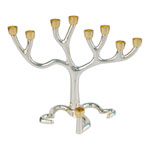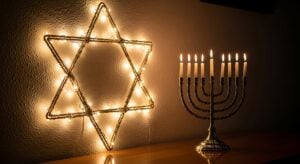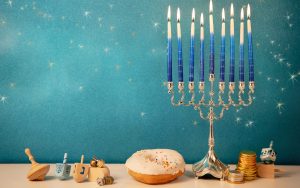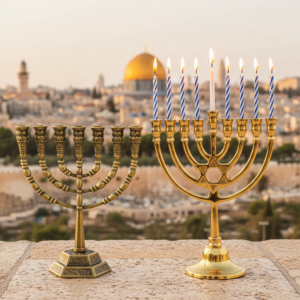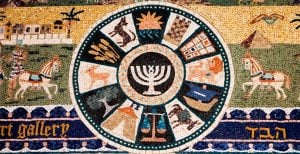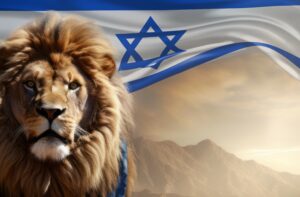1) Calendar
Hanukkah does not fall on the same dates each year because Jewish holidays are based on a combination of the lunar/solar calendar, unlike the traditional Gregorian calendar which is based solely on the earth’s movement around the sun.
2) The 2 Hanukkah Miracles
Hanukkah commemorates the military victory of the Maccabees, a small rebel band, over the mighty Greek army. In addition, it celebrates following miraculous re-dedication of the Holy Temple in Jerusalem. The Maccabees found enough pure oil inside the Temple to light its flame for a single day, but the lamp burned for eight days.
 3) The Hanukkah Menorah
3) The Hanukkah Menorah
The main ritual on Hannukah is the lighting of a special, nine-branched candelabrum each night, one for each night of Hanukkah and an extra one to light the others. Most people, however, incorrectly refer to this as a “Menorah”, when in fact the correct name for the candleholder is “Hanukkiah” or “Hanukkah menorah“. A Menorah, which has only seven candleholders, was the lamp used in the ancient Holy Temple in Jerusalem, now a symbol of Judaism and an emblem of Israel.
4) Mystery of Hanukkah
Unlike all other major Jewish holidays, Hanukkah is not mentioned once in the Hebrew Bible canon. This is because the events leading up to the holiday took place after the Bible was compiled. Interestingly, even the discussion of Hanukkah in the Talmud, the rabbinic commentary on the Hebrew Bible, begins by asking, “What is Hanukkah?”
5) Fried Means Festive
Most Hanukkah dishes are fried them in oil — a reference to the miracle of the oil that inspired this annual celebration. These include potato pancakes (latkes) and jelly doughnuts with jelly inside of them, with known as sufganiyot.
6) How is it Spelled?
There’s only one way to spell Hanukkah, unfortunately, it’s in Hebrew. When translated to English, variations include Hanukkah, Chanukah, Chanukkah or Hanukah and more.
7) Holy Gambling
One of the ancient customs of Hanukkah involves a “dreidel,” a four-sided spinning top that has different Hebrew letters on each side: nun, gimel, hey and shin. In Hebrew, the letters form the initials of the message, “A great miracle happened there” (referring Hanukkah’s everlasting oil). T
8) The Gift of Gelt
The gift of giving money on Hanukah first emerged as a tradition during the Middle Ages, when gelt (a Yiddish word for money) was given to teachers. The practice gradually extended to children as well, who were expected to donate some of it to charity as a good deed. (Gelt also became the reward for winning dreidel games.)
